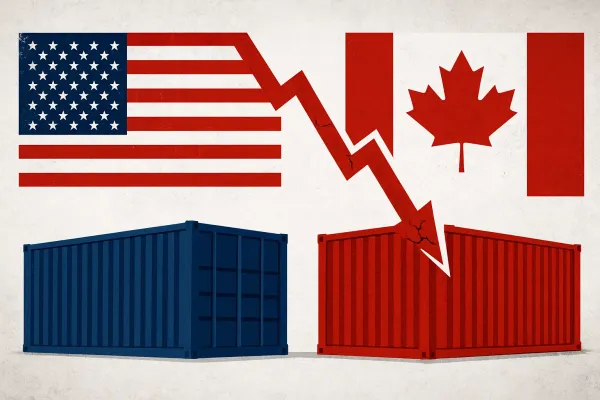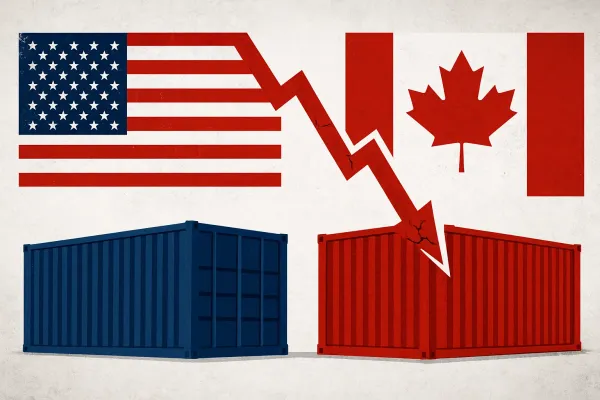Trump’s Claim vs India’s Energy Reality: Will New Delhi Stop Buying Russian Oil — Or Just Diversify Smarter?
President Trump’s claim that India will stop buying Russian oil grabbed headlines—but data tells a different story. India’s approach looks more like smart diversification than a sudden halt, balancing energy security, prices, and diplomacy.

When a Major Leader Makes a Sweeping Statement about India’s Energy Policy
When a major leader makes a sweeping statement about India’s energy policy, it naturally grabs attention. President Trump recently said Prime Minister Narendra Modi assured him India would stop buying Russian oil. For many readers, that sounded like a decisive break with a key supplier. But India’s official stance has not confirmed such a promise, and the most current shipping indicators point to something more nuanced: Russian crude flows rebounded in early October after a three-month dip, even as Indian refiners continued increasing non-Russian purchases to diversify their supply mix. The story here isn’t a sudden halt; it’s a managed transition designed to protect domestic prices and strategic leverage. ( Source: Reuters )
What Exactly Was Claimed—and Why Markets Cared
A claim that India would stop buying Russian oil isn’t just diplomatic theater. If taken at face value and at face speed, it would mean tightening India’s crude slate precisely when seasonal demand rises, and when markets are already sensitive to supply changes. President Trump framed the reported assurance as a “big step” and linked it to faster movement on a US–India trade package. That pairing matters. It suggests energy signaling could grease the wheels on tariffs and market access discussions. But energy policy is ultimately judged in cargo bookings and refinery runs, not microphones. When words and shipping data diverge, the data tends to win.
What New Delhi Is Actually Saying
India’s Ministry of External Affairs has stuck to a consistent message: energy sourcing is guided by national interest and consumer welfare. Public briefings also clarified there was no leader-level call on the day implied by the claim. In plain English, India isn’t announcing a sudden U-turn. If and when adjustments happen, they’ll be paced, signaled, and grounded in economics, not in a talking point that could spook markets or lift pump prices at home. This is exactly how India has navigated past rounds of geopolitical pressure—by keeping options open, protecting affordability, and adjusting gradually when it can do so without collateral damage. ( Source: The Times Of India )
What the Latest Data Shows: A Rebound, Not a Halt
The cleanest way to check the pulse is to look at October. After a steady decline from July through September, Russian crude flows to India bounced back in early October to around 1.8 million barrels per day. That rebound aligns with refinery economics and festive-season demand rather than the onset of a hard stop. It also lines up with the broader pattern of India’s post-2022 oil strategy: when discounts and freight make sense, Russian grades flow; when they don’t, volumes drift lower. A rebound at that scale is evidence that costs and yields still pencil out for Indian refiners, at least part of the time. (Source: The Times Of India )
Diversification Is Real—and Growing Alongside the Rebound
Rebounding Russian flows don’t mean nothing else changed. Reports also show Indian refiners lifting more non-Russian barrels this year than last, including additional US crude. That may sound contradictory, but it’s not. It is exactly what a cautious pivot looks like: keep the economically attractive volumes where they make sense, and add alternatives to reduce concentration risk and demonstrate flexibility to partners. This is the “both/and” approach—preserve price leverage while widening options—rather than an “either/or” move that could raise costs too quickly. ( Source: The Federal )
Why an Immediate Stop Is Unlikely—and Risky
Two constraints define the near term.
- The first is time. Crude cargoes are usually nominated four to six weeks ahead. Even if policymakers wanted to cut exposure after a headline, the impact would primarily show up in December–January deliveries, not in October flows already booked and sailing. ( Sources: Reuters )
- The second is economics. Discounts on Russian grades narrowed into late summer, and long-haul shipping costs rose. Swapping large volumes for less compatible or pricier alternatives overnight risks higher pump prices and pressure on the rupee. That runs counter to India’s core energy-security goals: stable prices for consumers and manageable import bills for the economy.
The US Trade-Deal Angle—and India’s Non-Negotiables
So why did the claim link energy to trade?
Because even incremental wins on tariffs and market access in the US matter for India’s manufacturing and supply-chain ambitions. Signaling some flexibility on Russian oil can be useful in that negotiation. But New Delhi has non-negotiables: don’t spike domestic inflation, don’t force refiner losses, and don’t give up strategic autonomy. The workable path is stepwise recalibration—more Middle East and US barrels, more US LNG, and modest reductions in Russian grades as economics and logistics allow. That way, India can credibly signal movement without inviting a price shock at home.
Refinery Economics, in Practical Terms
Indian refineries, especially complex ones, are engineered to maximize middle distillates like diesel and jet. Urals-type blends fit those yield targets and, since 2022, often came with steep discounts that boosted margins and kept domestic prices contained. As discounts narrowed and freight rose in Q3, volumes dipped—a natural response—then rebounded toward ~1.8 million barrels per day in early October when netbacks improved. This isn’t ideology; it is math. The slate follows yields, spreads, and freight. If those inputs shift, the mix shifts. But sudden, sweeping changes usually cost more than they save. ( Source: Offshore Engineer Energy News )
Different Playbooks for Different Refiners
State-owned and private refiners don’t always behave the same way, and that’s by design. State-owned firms trimmed Russian exposure earlier; private refiners raised intake. That split spreads policy sensitivity and pricing risk across the system. It also lets India “show” diversification on the public side while keeping the overall supply stable and affordable. **In effect, this softens market reactions and helps avoid sudden retail price moves, which are politically and economically expensive.**
Can India Really Do Without Russian Oil?
Could India replace Russian barrels entirely if it absolutely had to? In theory, yes—Indian refineries can process diverse grades. In practice, doing it quickly would be costly and disruptive. The most realistic replacements are Middle East grades that fit operationally, plus tactical volumes of US WTI Midland and some West Africa or Latin America cargoes when spreads and shipping align. The constraint is not just “where to buy,” but “at what landed cost and with what yields.” The difference is what consumers feel at the pump. That’s why the debate isn’t binary; it’s about **pace, price, and logistics.** ( Source: BBC )
Three Winter Scenarios—and How to Read Them
What happens over the next 60–90 days depends on policy signals, bookings, and spreads. The most likely path is gradual trimming: India reduces Russian share at the margin into winter while lifting Middle East and US intake, keeping retail prices steady and demonstrating cooperation without a public “halt” line. Another plausible outcome is baseline drift: flows move primarily with economics, diversification inches up, and political rhetoric outpaces what ports and refineries can do. A faster shift is possible if trade deliverables are substantive—but even then, expect phasing through nomination windows and freight availability to protect margins. **The telltales will be official guidance and December–January shipping data.**
What Readers Should Watch Next
There are three practical signals worth tracking.
First, any public guidance from India’s foreign ministry or state-owned refiners on source mix. If it appears, that’s more meaningful than a remark. If it doesn’t, continuity with measured tweaks is the base case.
Second, shipping prints for December–January. That is where a structural reduction would show, given nomination and voyage lags.
Third, Brent–Urals spreads and shipping costs. If discounts re-widen and freight is manageable, keeping some Russian share remains attractive; if spreads compress and shipping is tight, non-Russian intake grows on economics alone.
So, Will India Stop—or Diversify Smarter?
The best answer right now is that India will diversify smarter. There is no verified halt in place today. The freshest indicator—early October shipping—shows a rebound in Russian barrels while refiners also buy more from other sources, particularly the US and the Middle East. That’s what a cautious, data-led diversification looks like. If US–India trade deliverables materialize, expect stepwise trims to Russian volumes and more non-Russian intake. The pacing won’t be set by sound bites; it will be set by refinery economics, shipping windows, and India’s overarching goal: protecting price stability at home while maintaining bargaining power abroad.
Why This Approach Is Rational
Energy policy is rarely about all-or-nothing moves; it’s about minimizing cost without losing leverage. A sudden break can satisfy a headline but create bigger problems—higher inflation, angry consumers, strained public finances, and thinner negotiating space. A measured shift allows India to price test alternatives, smooth out logistics, and avoid missteps that markets would punish. The result won’t please absolutists on either side, but it’s more likely to deliver what matters: predictable prices, flexible sourcing, and sustainable diplomacy.
A Final Thought for Readers
When you see a big claim about oil, always ask three questions:
One: has it been confirmed by the country making the change?
Two: do the ships and refineries reflect it yet—or will they only do so weeks later?
Three: what’s the replacement plan, and at what landed cost?
Those answers tell you what’s noise and what’s real. In India’s case, the signals are clear enough for now: keep options open, move step by step, and avoid shocks that would be paid for at the pump. That is not indecision—it is strategy, grounded in the numbers that run through every invoice, tanker, and refinery stack.
Related Articles:
- Power Plays: How the U.S. Leverages Energy and Climate for Global Diplomacy – See how major powers use governance tools for international influence—context for understanding India's own strategic approaches.
- India's Strategic Balancing Act - 2025: Managing Relations with the US, Russia, and China – Explore how India's domestic political priorities shape its foreign policy approach and navigation of great power competition.
- 2025 Russia–Ukraine War Analysis: NATO's Role, Trump, and What's Next – Understand global geopolitical shifts that influence India's strategic calculations and policy decisions.
- From Allies to Adversaries: How the Taliban–Pakistan Relationship Broke Down and What It Means for South Asia – Why Pakistan–Taliban tensions raise cross‑border security risks, disrupt regional trade corridors, and complicate India’s energy logistics and strategic planning.
Citations
- Reuters — Trump says Modi assured him India will not buy Russian oil
- Times of India — India’s Russian crude oil trade rebound in October (~1.8 mbpd)
- The Federal — India’s Russian oil imports rebound in October despite Trump claim
- Reuters — US says India halves Russian oil imports; sources say no immediate cuts
- Offshore Engineer Energy News — Urals prices up in Indian ports; freight/discount context
- BBC — Cheap oil, high stakes: Can India do without Russia?
- Times of India — No call between them: India rejects Trump’s claim of speaking to PM Modi
Loved this article?
Visit our main page for more insights and subscribe for updates!





